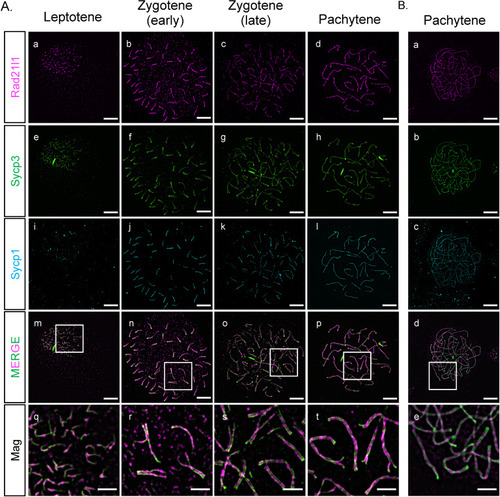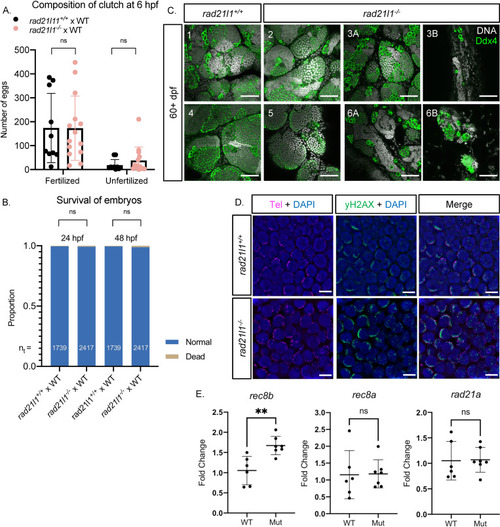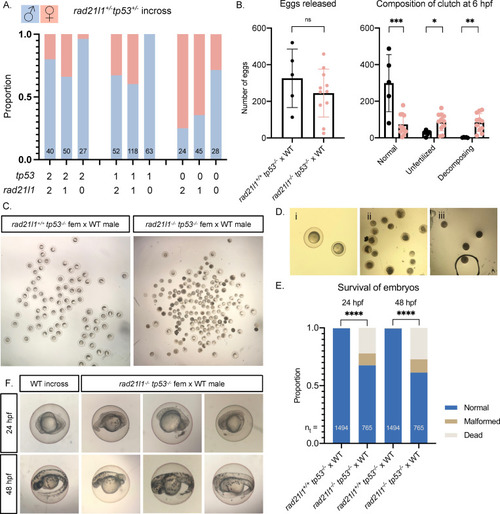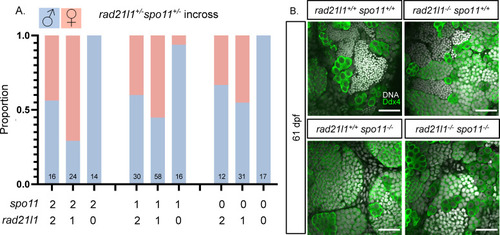- Title
-
Rad21l1 cohesin subunit is dispensable for spermatogenesis but not oogenesis in zebrafish
- Authors
- Blokhina, Y.P., Frees, M.A., Nguyen, A., Sharifi, M., Chu, D.B., Bispo, K., Olaya, I., Draper, B.W., Burgess, S.M.
- Source
- Full text @ PLoS Genet.
|
(A) Rad21l1 loading during prophase I of meiosis in spermatocyte nuclear surface spreads. Rad21l1 (magenta) loads onto chromosome axes simultaneously with Sycp3 (green) and is also dispersed as foci throughout the spread in leptotene. In early zygotene, Sycp1 (cyan) lines start near the telomeres and synapsis extends inward through late zygotene and are present end-to-end along axes. Note: there is some asynapsis in the pachytene nucleus which may indicate that the cell was either in very early or very late pachytene. The merged images are Rad21l1 and Sycp3 channels only. Mag images are magnifications from the Merge panels; the regions magnified are indicated by white boxes. Panel series a-p scale bar = 5 μm. Mag panel series q-t scale bar = 2 μm. (B) Rad21l1 loading during prophase I of meiosis in oocyte nuclear surface spreads. Panels a-e are arranged similarly to the corresponding panels of part (A). |
|
(A) TALEN generated 17-bp deletion leads to a frameshift mutation resulting in a truncated 27 amino acid (aa) Rad21l1 protein with the conserved Rec8/Rad21-like family domains (1–100 aa and 495–543 aa) disrupted or deleted. Rec8/Rad21-like domains (purple boxes); altered amino acid sequence (red box). The ATG translational start site is located at the 4th-6th nucleotide from the end. (B) Spermatocyte nuclear spreads stained for telomeres (cyan), Sycp3 (green), and Rad21l1 (magenta). Rad21l1 forms lines of foci along the Sycp3 axis in |
|
(A/B) Data resulting from test crosses between |
|
(A) Sex ratios of all genotypes resulting from a |
|
(A) Sex ratios of all genotypes resulting from a |





